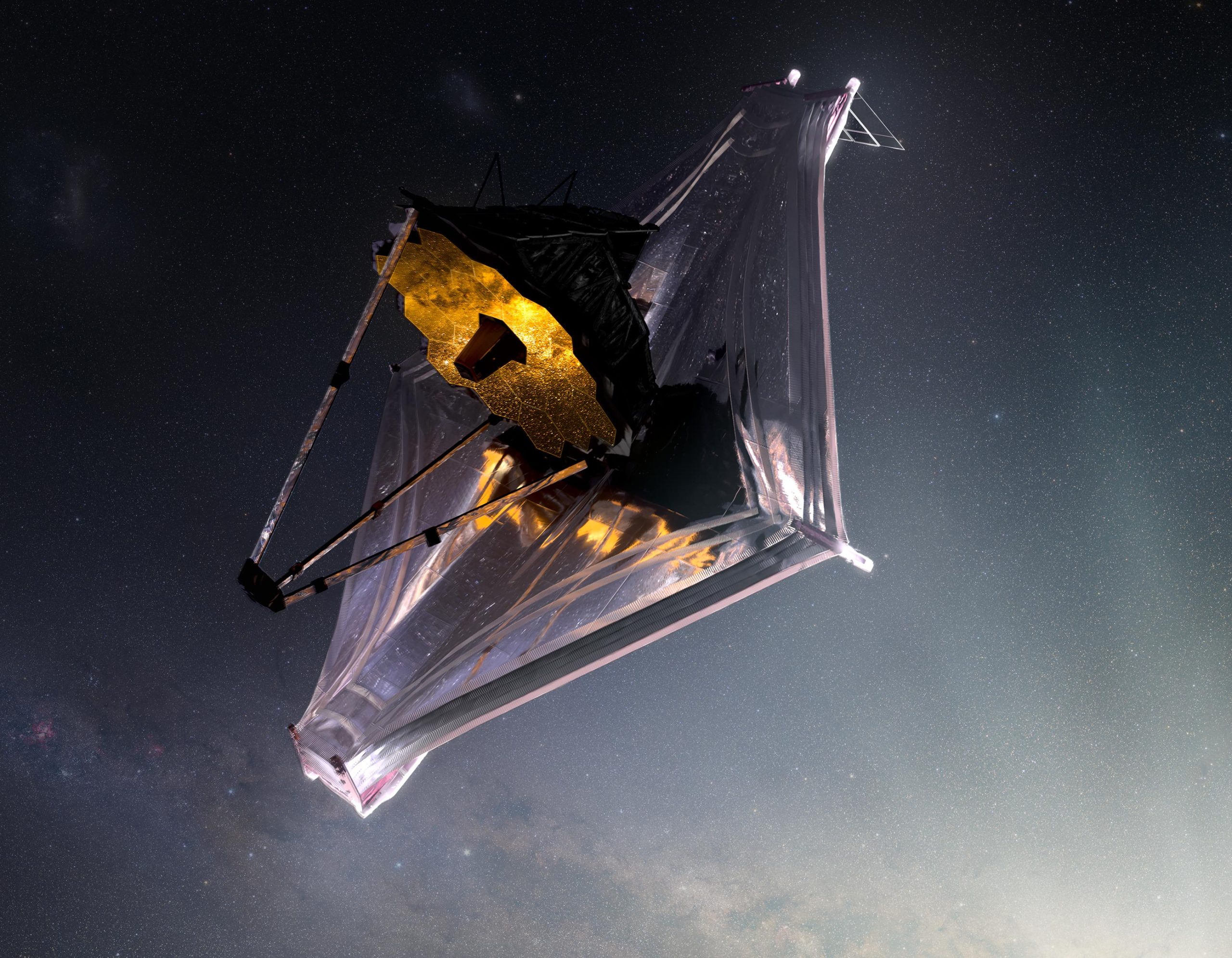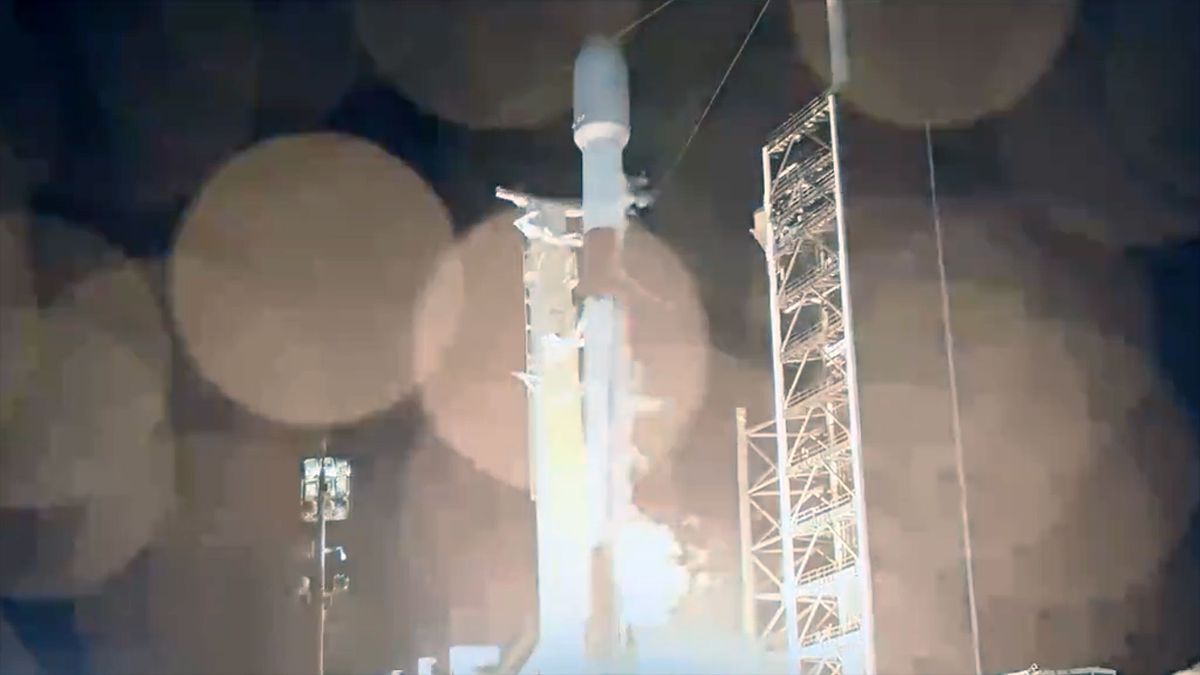
تصور الفنان لتلسكوب جيمس ويب الفضائي. الائتمان: NASA GSFC / CIL / Adriana Manrique Gutierrez
فريق تلسكوب الفضاء ويب الاستمرار في العمل على التكليف الأجهزة العلمية ، وهي الخطوة الأخيرة قبل بدء العمليات العلمية في الصيف. لقد رأينا مؤخرًا الصورة المذهلة لـ الثقب الأسود في مركز مجرتنا درب التبانةالتي اتخذتها تلسكوب أفق الحدث. واحدة من الألغاز في علم الفلك الحديث هي كيف أن كل واحدة كبيرة المجرة أصبح لدينا قوة هائلة الثقب الأسود، وكيف أن بعض هذه الثقوب السوداء كبيرة بشكل مدهش حتى في العصور الأولى للكون. لقد طلبنا من روبرتو مايولينو ، عضو فريق ويب Webb’s Near Infrared Spectrometer (NIRSpec) Instrument Science Team ، أن يخبرنا كيف سيساعد Webb في الإجابة على بعض هذه الأسئلة.
“أحد أكثر مجالات الاكتشاف إثارة التي يوشك ويب فتحها هو البحث عن الثقوب السوداء المبكرة في بدايات الكون. هذه هي بذور الثقوب السوداء الأكثر ضخامة التي وجدها علماء الفلك في نوى المجرة. تستضيف المجرات ثقوبًا سوداء في مراكزها ، تتراوح كتلتها بين ملايين إلى مليارات المرات من كتلة شمسنا ، وقد نمت هذه الثقوب السوداء الهائلة بشكل كبير دفعة واحدة عن طريق غمر المادة من حولها وأيضًا عن طريق دمج ثقوب سوداء أصغر.
“الاكتشاف الأخير المثير للاهتمام هو اكتشاف الثقوب السوداء شديدة الكتلة ، مع كتل من مليارات الكتل الشمسية ، كانت موجودة بالفعل عندما كان عمر الكون حوالي 700 مليون سنة فقط ، وهو جزء صغير من عمره الحالي البالغ 13.8 مليار سنة. هذه نتيجة محيرة ، لأنه في هذه العصور المبكرة لم يكن هناك وقت كافٍ لتطوير مثل هذه الثقوب السوداء شديدة الكتلة ، وفقًا للنظريات القياسية ، وقد تم اقتراح بعض السيناريوهات لحل هذا اللغز.
“أحد الاحتمالات هو أن الثقوب السوداء ، الناتجة عن موت الجيل الأول من النجوم في بدايات الكون ، تراكمت المادة بمعدلات عالية بشكل غير عادي. سيناريو آخر هو أن السحب الغازية المبكرة والسحب الأصلية ، لم يتم تخصيبها بعد بعناصر كيميائية أثقل من الهليوم ، يمكن أن ينهار مباشرة لتشكيل a[{” attribute=””>black hole with a mass of a few hundred thousand solar masses, and subsequently accrete matter to evolve into the hyper-massive black holes observed at later epochs. Finally, dense, nuclear star clusters at the centers of baby galaxies may have produced intermediate mass black hole seeds, via stellar collisions or merging of stellar-mass black holes, and then become much more massive via accretion.

This illustration shows the populations of known black holes (large black dots) and the candidate black hole progenitors in the early universe (shaded regions). Credit: Roberto Maiolino, University of Cambridge
“Webb is about to open a completely new discovery space in this area. It is possible that the first black hole seeds originally formed in the ‘baby universe,’ within just a few million years after the big bang. Webb is the perfect ‘time machine’ to learn about these primeval objects. Its exceptional sensitivity makes Webb capable of detecting extremely distant galaxies, and because of the time required for the light emitted by the galaxies to travel to us, we will see them as they were in the remote past.
“Webb’s NIRSpec instrument is particularly well suited to identify primeval black hole seeds. My colleagues in the NIRSpec Instrument Science Team and I will be searching for their signatures during ‘active’ phases, when they are voraciously gobbling matter and growing rapidly. In these phases the material surrounding them becomes extremely hot and luminous and ionizes the atoms in their surroundings and in their host galaxies.
“NIRSpec will disperse the light from these systems into spectra, or ‘rainbows.’ The rainbow of active black hole seeds will be characterised by specific ‘fingerprints,’ features of highly ionized atoms. NIRSpec will also measure the velocity of the gas orbiting in the vicinity of these primeval black holes. Smaller black holes will be characterized by lower orbital velocities. Black hole seeds formed in pristine clouds will be identified by the absence of features associated with any element heavier than helium.
“I look forward to using Webb’s unprecedented capabilities to search for these black hole progenitors, with the ultimate goal of understanding their nature and origin. The early universe and the realm of black holes seeds is a completely uncharted territory that my colleagues and I are very excited to explore with Webb.”
— Roberto Maiolino, professor of experimental astrophysics and director of the Kavli Institute for Cosmology, University of Cambridge
Written by:
- Jonathan Gardner, Webb deputy senior project scientist, NASA’s Goddard Space Flight Center
- Stefanie Milam, Webb deputy project scientist for planetary science, NASA’s Goddard Space Flight Center

“هواة الإنترنت المتواضعين بشكل يثير الغضب. مثيري الشغب فخور. عاشق الويب. رجل أعمال. محامي الموسيقى الحائز على جوائز.”





